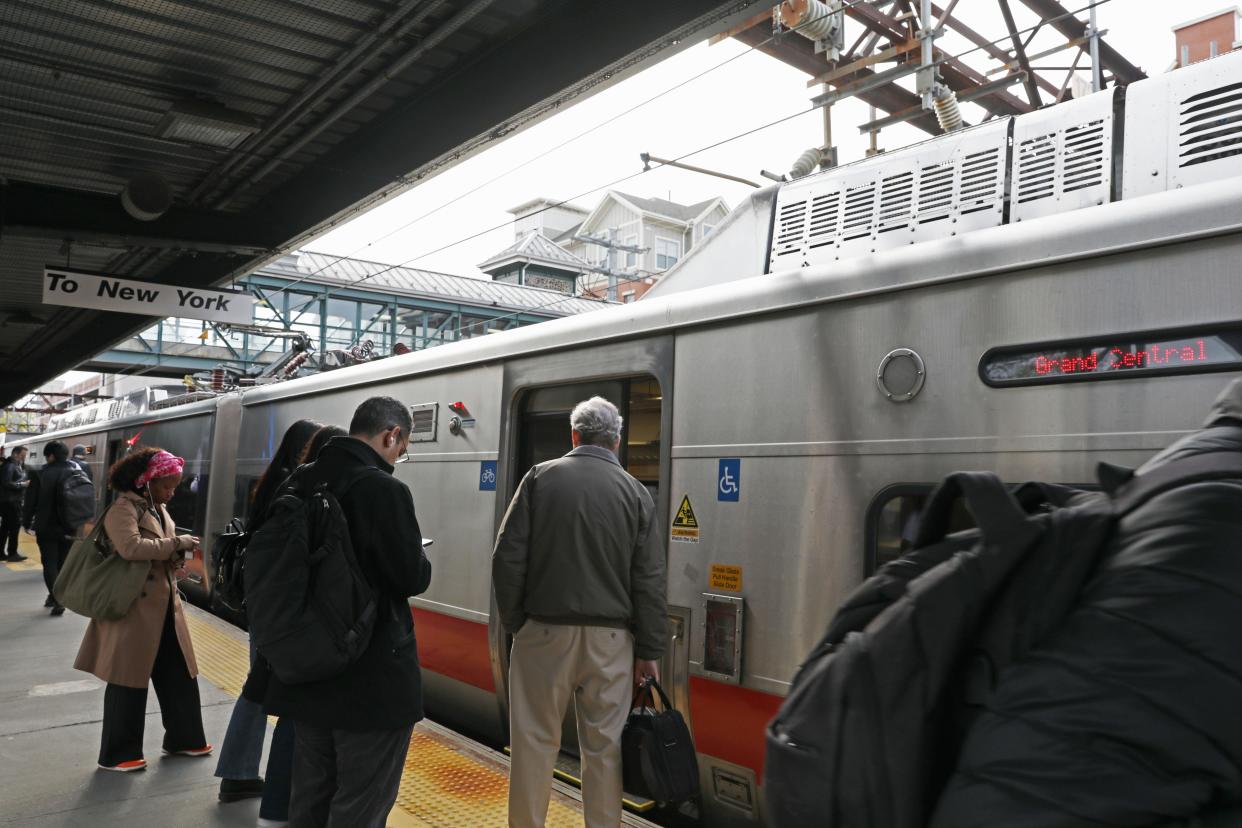Study examines 'transit oriented developments' in Lower Hudson Valley communities
The wave of transit oriented development continues in the Lower Hudson Valley.
Transit oriented development (TOD) strategically develops communities in areas "well served" by public transit. The goal is to create compact, walkable, mixed-use communities centered around train systems, according to the Transit Oriented Development Institute.
Many of these communities, such as Westchester's Tuckahoe, Rye and Chappaqua, are transit oriented developments that are walkable, mixed-use communities with transportation access at the community's center.

Transit oriented developments in Westchester, Rockland and Putnam
A recent report presented by the Regional Planning Association offered key details about TODs in the Lower Hudson Valley, including data from how many multi-family units exist near corresponding Metro-North stations, to just how long it takes a resident to walk to the train.
The report showed the Lower Hudson Valley has the most even distribution of housing types— most units are in multi-family buildings (5 or more units)— followed by single-family detached, single-family attached, and multi-family buildings with 2 to 4 units.
Read on to see select insights on TODs in Westchester, Rockland and Putnam counties.
Putnam County
Communities in Putnam County had some of the longer walks to train stations, with the walk from housing developments to Manitou station being one of the longest in the Lower Hudson Valley at over 28 minutes. According to data related to the Regional Planning Association's Homes on Track report, Putnam was the only Lower Hudson Valley county that had two stations with zero multi-family dwellings built nearby: Garrison and Southeast.
Westchester County
Of the 44 Westchester stations studied for the report, Wakefield, Philipse Manor, Port Chester, Pleasantville and Yonkers had the shortest walk times from housing units to train stations. The walk to Cortlandt Station was the longest overall out of the three Lower Hudson counties at more than 31 minutes. The Fleetwood Station had the most multi-family dwelling units nearby, while Golden's Bridge Station had the least.
Rockland County
There are five train stations in Rockland County that were studied for the report: Nanuet, Pearl River, Sloatsburg, Spring Valley and Suffern. The average walk time from housing units to a train station range from 8.4 to just over 10 minutes. Most multi-family apartments were located within proximity to the Spring Valley station.
Underutilized land in Lower Hudson Valley
According to Marcel Negret, senior planner at the Regional Plan Association, there is a “significant amount of underutilized land and growing housing needs” in the Lower Hudson Valley.
The Homes on Track report reveals that 21 stations in Westchester, Rockland and Putnam are near areas with a high amount of vacant land (over 7.27 acres).
About 11,500 acres of land within half a mile radius of each train station is vacant. According to the report, 23 stations in the region have “significant amount of underutilized land but need large-scale infrastructure investments” as well as planning and zoning changes to enable more housing near transit. Most stations are along the Hudson Line that are facing topography challenges and potential flooding concerns, Negret said.
Meanwhile, housing supply has been constrained while the population is growing. The 2020 Census reported that the population in the Lower Hudson Valley region had grown by 5% since 2010.
Negret said the housing supply has declined significantly— for example, the number of building permits issued for single-family homes dropped from 18,000 between 1999 and 2009, to 5,600 between 2010 and 2022. The permits issued for multi-family buildings with 2 to 4 units decreased from 3,200 to 1,700 during the same time period.
“The significant amount of underutilized land indicates that there’s opportunity to align land use in a better way to leverage the access to the transit network and to increase housing stock the region has been lacking. There’s a need and space that seems to be available to build more housing,” Negret said.
'Part of a thriving city'
Blanca Lopez, Westchester County Commissioner of Planning, said the county has prioritized TOD in its comprehensive plans to accomplish planning goals, including reducing single-occupancy vehicle trips, the amount of land used for parking and bus routes.
The plans require developers to include information regarding the proximity of proposed developments to public transit in proposals and offers financial incentives for affordable housing and infrastructure.
The push for TOD in the county has resulted in mixed-use properties like the Avalon Harrison, located near the Harrison train station.
In White Plains, more than 1,500 transit-oriented housing units have been approved and 2,000 units are under construction or waiting to be built, with one of the largest such redevelopment projects currently underway at the District Galleria. The project plans to replace an 870,000-square foot mall with residential towers, office space, retail and open space. The developer is seeking to rezone the area to a transit development district that would encourage street activity.
White Plains Commissioner of Planning Christopher Gomez said the city sprung up around the train station in the 1800s, and its development incorporated a combination of office and residential buildings. A transit development zoning district that was created five years ago, Hamilton Green, is now building 860 rental apartments at the former White Plains Mall site.
Mayor Thomas Roach said his vision of transit oriented developments is to provide outdoor space for the public and open space to walk through.
"We're changing the nature of street interaction," Roach said. "What we want to see is people enjoy life, which is a part of a thriving city."
— Emerging Audiences Editor Ashley Fontones contributed reporting for this story.
This article originally appeared on Rockland/Westchester Journal News: Lower Hudson Valley 'transit oriented developments' examined in study
